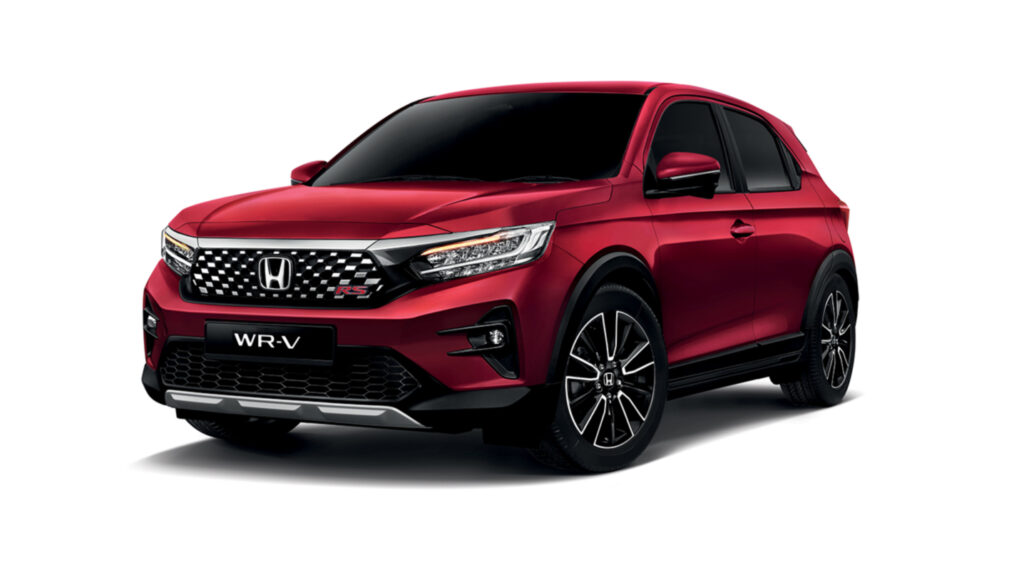Introduction
The Honda WR-V, a subcompact crossover SUV, has been a key player in Honda’s lineup since its debut in 2017, designed specifically for emerging markets. Positioned below the HR-V/Vezel or BR-V depending on the region, the WR-V (Winsome Runabout Vehicle) combines practicality, style, and versatility. With two distinct generations, it caters to young, adventure-seeking drivers in markets like South America, India, and Southeast Asia. This article explores the WR-V’s evolution, design, features, and market positioning.

First Generation (2017–2022)
Launched at the 2016 São Paulo International Motor Show, the first-generation WR-V was developed by Honda’s R&D centers in Brazil and Japan, targeting the preferences of young Brazilian and Indian customers. Built on the third-generation Honda Fit/Jazz platform, it featured a crossover-styled design with a distinct front fascia, bonnet, and a ground clearance of 188 mm, ideal for urban and light off-road conditions.
Read also: Mercedes-AMG CLE 53 4MATIC+ Coupe Set for India Debut on August 12, 2025
Design and Features
The first-generation WR-V shared its body shell, doors, dashboard, and instrument panel with the Jazz, but its sporty and aggressive design language set it apart. Key features included:
- Exterior: Chrome-accented front grille, projector headlamps, and LED DRLs (post-2020 facelift).
- Interior: Spacious cabin with a 363-liter boot, practical storage, and a 7-inch touchscreen infotainment system supporting Android Auto and Apple CarPlay.
- Safety: Dual front airbags, ABS with EBD, rear parking sensors, and a rearview camera.
Engine Options
In India, the WR-V offered two BS6-compliant engines:
- Petrol: 1.2L i-VTEC 4-cylinder, producing 89 hp and 110 Nm, paired with a 5-speed manual transmission (16.5 km/l mileage).
- Diesel: 1.5L i-DTEC 4-cylinder, delivering 99 hp and 200 Nm, paired with a 6-speed manual transmission (23.7 km/l mileage)
Market Performance
Priced between ₹8.03–13.13 lakh (ex-showroom) in India, the WR-V competed with subcompact SUVs like the Maruti Suzuki Brezza, Hyundai Venue, and Tata Nexon. It was praised for its spacious cabin, reliable engines, and city-friendly handling but faced criticism for lacking an automatic transmission and premium features like a sunroof in base variants. Sales in Brazil ended in 2022, though production continued for export. In India, it was discontinued in April 2023 due to BS6 Phase 2 emission norms.
Second Generation (2022–Present)
Introduced in Indonesia on November 2, 2022, the second-generation WR-V is based on a shortened platform of the second-generation BR-V and Amaze, offering a more modern design and enhanced features. Developed by Honda R&D Asia Pacific, it boasts a higher ground clearance of 220 mm (207 mm in Malaysia) and targets the small SUV segment, rivaling the Toyota Raize.
Design and Features
The second-generation WR-V adopts a bolder aesthetic and upgraded technology:
- Exterior: LED headlights, 17-inch alloy wheels, and a sleek grille for a sporty look.
- Interior: A 7-inch touchscreen with smartphone connectivity, semi-digital instrument cluster, automatic AC, and a spacious 380-liter boot.
- Safety: Honda Sensing (standard on higher trims) includes adaptive cruise control, lane-keeping assist, and automatic emergency braking. Additional features like a LaneWatch camera and six airbags enhance safety.
Engine and Performance
The second-generation WR-V is powered by a 1.5L DOHC i-VTEC petrol engine, producing 119 hp and 145 Nm, paired with a CVT (a 6-speed manual was added for the E trim in Indonesia in 2023). The diesel option was dropped, aligning with global trends toward petrol and hybrid powertrains. The engine offers smooth performance and fuel efficiency, with real-world mileage around 15–16 km/l.
Market Availability
The second-generation WR-V is sold in Southeast Asian markets like Indonesia (E and RS trims), Thailand (SV and RS trims), Brunei (RS trim), and Malaysia (S, E, V, and RS trims). In Malaysia, it replaced the BR-V, with local assembly starting in June 2023. Prices start at RM 89,900 in Malaysia.
Upcoming India Launch (2026)
Honda plans to reintroduce the WR-V in India in March 2026, likely based on the Elevate platform (similar to the Japanese WR-V). Expected to be priced between ₹9–16 lakh, it will compete with sub-4-meter SUVs like the Maruti Suzuki Fronx, Tata Punch, and Hyundai Venue. Anticipated features include.
Read also: Maruti e Vitara: India’s First Electric SUV by Maruti Suzuki
Conclusion
The Honda WR-V has evolved from a Jazz-based crossover to a modern subcompact SUV tailored for diverse markets. Its first generation excelled in practicality but lacked premium features, while the second generation offers bolder styling, advanced safety, and improved dynamics. With its upcoming India launch in 2026, the WR-V aims to recapture market share with a feature-rich package and competitive pricing. For buyers seeking a reliable, stylish, and versatile compact SUV, the WR-V remains a compelling choice, backed by Honda’s reputation for quality and innovation.






Leave a Reply